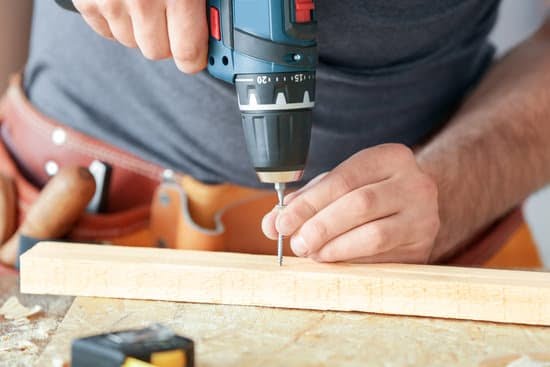Woodworking is a craft that requires precision, accuracy, and careful planning. One tool that plays a crucial role in achieving these qualities is a drawing stick. In this introductory section, we will explore the importance of a drawing stick in woodworking and discuss its purpose and benefits.
A drawing stick, also known as a story pole or story stick, is essentially a long measuring tool used to transfer dimensions and create accurate templates for woodworking projects. It serves as a guide throughout the entire woodworking process, ensuring consistency and precision in measurements.
The primary purpose of a drawing stick is to eliminate errors caused by repeatedly using rulers or tape measures. With a drawing stick, woodworkers can easily mark out measurements on their workpieces without the need for constant recalibration. This tool allows for more efficient working, saving valuable time and reducing the potential for mistakes.
Using a drawing stick offers several benefits in woodworking projects. Firstly, it provides a clear visual representation of the final piece before any cutting or shaping begins. By creating detailed drawings with the help of a drawing stick, woodworkers can plan their projects more effectively and make informed decisions about design elements, joinery techniques, and material choices.
Additionally, precise measurements are crucial in woodworking to ensure that all components fit together perfectly. A drawing stick allows woodworkers to accurately measure and transfer dimensions onto their workpieces, leading to better-fitting joints and overall improved craftsmanship.
In the following sections of this article, we will delve deeper into understanding different types of woodworking drawings and how they help in project planning. We will also explore how to choose suitable materials for making your own drawing stick and provide step-by-step instructions on how to build one yourself.
Furthermore, we will discuss ways to effectively use the drawing stick in various woodworking projects while addressing troubleshooting challenges that may arise along the way. Finally, we will gather insights from experienced woodworkers who have mastered the art of using drawing sticks in their craft.
By incorporating the use of a drawing stick in your woodworking endeavors, you will elevate the precision and accuracy of your creations. With this versatile tool at your disposal, you can confidently tackle woodworking projects with greater efficiency and produce high-quality woodwork that exceeds expectations.
Understanding the Basics of Woodworking Drawings
Woodworking drawings play a crucial role in planning and visualizing woodwork projects. Whether it’s a blueprint or a simple sketch, these drawings provide the necessary guidance to bring your woodworking ideas to life. Understanding the basics of woodworking drawings is essential for any woodworker, as it helps ensure precision, accuracy, and successful project outcomes.
There are various types of woodworking drawings that you may encounter throughout your woodworking journey. Blueprints, also known as technical drawings, are detailed representations of the project that include measurements, dimensions, and specific instructions. Sketches, on the other hand, provide a more informal visualization of the project layout and design.
These drawings serve as a roadmap for your woodworking projects. They help you analyze and evaluate different design options before committing to construction. By properly interpreting these drawings, you can determine the materials required, plan out each step with greater clarity, and anticipate any potential challenges that may arise along the way.
Accurate and detailed measurements are fundamental to successful woodworking drawings. Every inch matters when it comes to creating quality woodwork. When measuring for your drawing stick on your woodworking project (and other aspects such as angles or joints), precision is key for ensuring seamless assembly and professional-looking results.
To make accurate measurements, invest in high-quality measuring tools such as a tape measure or combination square. These tools will allow you to precisely calculate dimensions while providing clear references for marking or cutting pieces of wood accurately.
In summary, understanding the basics of woodworking drawings is essential for any woodworker looking to master their craft. By familiarizing yourself with different types of woodworking drawings and emphasizing precise measurements, you’ll gain valuable insights into planning and visualizing your projects effectively. Remember – careful attention to detail in your drawings will translate into exceptional results in your woodworking endeavors.
Choosing the Right Materials for Your Drawing Stick
Choosing the right materials for your drawing stick is crucial to ensure its durability and effectiveness in woodworking projects. The choice of material should consider factors such as durability and stability. Here are some recommendations and pros/cons for various material options:
Wood
One of the most common materials used for making a drawing stick is wood. Wood offers a natural feel and aesthetic appeal, making it a popular choice among woodworkers. Hardwoods like maple, oak, or cherry are often preferred due to their strength and stability. However, softer woods like pine can also be used if properly treated to enhance durability.
- Pros: Wood is readily available, easy to shape, and offers a comfortable grip. It can be customized with carvings or engravings for personalization.
- Cons: Wood may be susceptible to warping or splitting over time if not maintained properly. It may also be more prone to wear and tear from frequent use.
Metal
Another option for making a drawing stick is metal, such as aluminum or steel. Metal drawing sticks are known for their durability and stability, which makes them suitable for heavy-duty woodworking projects.
- Pros: Metal drawing sticks are highly durable and resistant to wear and tear. They offer precise measurements due to their rigid construction.
- Cons: Metal drawing sticks may feel cold or uncomfortable in hand compared to wooden ones. They can also be heavier, which might affect maneuverability during certain woodworking tasks.
Composite Materials
Composite materials like fiberglass or carbon fiber can provide an alternative option for making a drawing stick. These materials offer a combination of strength, lightweight design, and resistance to moisture or temperature changes.
- Pros: Composite materials offer excellent strength-to-weight ratio, making them lightweight yet durable. They are also less likely to warp or bend compared to wood.
- Cons: Composite materials may require specific tools or techniques for shaping compared to traditional woodworking materials. They can be more expensive and less readily available than wood or metal options.
When choosing the material for your drawing stick, it’s essential to consider your personal preference, the specific woodworking projects you plan to undertake, and your budget. Ultimately, selecting a material that provides durability, stability, and comfort will ensure that your drawing stick becomes an indispensable tool in your woodworking endeavors.
Step-by-Step Guide
Building your own drawing stick is a simple and rewarding process that will enhance your woodworking projects. By following these step-by-step instructions, you will be able to create a custom drawing stick that perfectly suits your needs.
Step 1: Gathering the necessary tools and materials
Before you begin building your drawing stick, make sure you have all the required tools and materials. You will need a suitable piece of hardwood or plywood that is long enough for your desired drawing stick length. Additionally, gather tools such as a saw, sandpaper or a wood file for shaping, and finishing materials like varnish or oil for protection.
Step 2: Measuring and cutting the drawing stick to the desired length
Start by measuring the length you want for your drawing stick. This will depend on personal preference and the size of the woodworking projects you typically undertake. Use a measuring tape or ruler to mark the appropriate length on your chosen piece of wood. Then, carefully cut along the marked line using a saw. Make sure to keep straight cuts for optimal functionality.
Step 3: Shaping and refining the drawing stick for optimal grip and stability
Once you have cut the wood to size, it’s time to shape and refine it to ensure it has an ergonomic grip and stability. Use sandpaper or a wood file to smooth out any rough edges or sharp corners. This will provide a comfortable grip when using the drawing stick and prevent any potential injuries from splinters. Take extra care in shaping areas where your hand will hold onto the stick.
Step 4: Applying finishes or treatments to enhance durability
To enhance durability and longevity, consider applying finishes or treatments to protect your drawing stick from wear and tear over time. Varnish or oil can help preserve the wood while adding an attractive sheen. Apply multiple coats according to the product instructions, allowing each coat to dry before applying the next.
Step 5: Testing the drawing stick for accuracy and functionality
Before using your drawing stick on a woodworking project, it is crucial to test its accuracy and functionality. Use a ruler or measuring tape to verify that the measurements on your drawing stick align with their corresponding values. This will ensure precision when transferring dimensions to your woodwork projects. Additionally, test the grip and stability of the drawing stick by holding it firmly and simulating its use in various woodworking tasks.
By following these step-by-step instructions, you can create a custom-made drawing stick that will enhance your woodworking experience. Remember to take your time during each step to ensure precision and accuracy in building your own drawing stick.
Using the Drawing Stick in Woodworking Projects
Once you have built your own drawing stick, it’s time to start using it in your woodworking projects. The drawing stick is a versatile tool that can assist you in various tasks, such as measuring and transferring dimensions accurately. Here are step-by-step instructions on how to use the drawing stick effectively:
- Measuring and Transferring Dimensions: One of the primary purposes of a drawing stick is to accurately measure and transfer dimensions from one piece of wood to another. To do this, simply align the drawing stick with the desired measurement on your woodworking drawing or blueprint. Hold the stick firmly against the edge of the wood, and then mark where the measurement ends on the other piece of wood.
- Ensuring Precision: To ensure precision when using the drawing stick, it is crucial to hold it securely against the wood while making measurements or marking dimensions. This will help prevent any slippage or inaccuracies in your work. Additionally, always double-check your measurements before cutting or shaping any pieces of wood.
- Avoiding Common Mistakes: While using a drawing stick can significantly improve accuracy in woodworking, there are some common mistakes you should be aware of and avoid. One mistake is not holding the drawing stick firmly against the wood while marking measurements, which can lead to inaccurate cuts or joints. Another mistake is not verifying measurements with a ruler or tape measure for confirmation.
Incorporating a drawing stick into your woodworking projects will elevate your craftsmanship and make your work more precise and professional-looking. By following these instructions and practicing with the drawing stick regularly, you will become more skilled in measuring and transferring dimensions accurately.
| Steps | Description |
|---|---|
| Step 1 | Gather all necessary tools and materials. |
| Step 2 | Measure and cut the drawing stick to the desired length. |
| Step 3 | Shape and refine the drawing stick for optimal grip and stability. |
| Step 4 | Apply finishes or treatments to enhance durability. |
| Step 5 | Test the drawing stick for accuracy and functionality. |
Troubleshooting
Woodworking can be a highly rewarding and fulfilling hobby, but it is not without its challenges. When using a drawing stick in woodworking, there may be instances where you encounter difficulties or face obstacles that impede the smooth progress of your projects. In this section, we will explore some common issues that woodworkers may encounter when using a drawing stick and provide practical solutions to overcome these challenges.
One potential challenge that you may face with a drawing stick is slippage, particularly when measuring or transferring dimensions. To prevent slippage, make sure that the drawing stick is securely held in place against the wood surface. You can achieve this by using clamps or double-sided tape to secure the stick firmly. Additionally, consider adding a non-slip grip to the end of your drawing stick for added stability.
Another challenge that woodworkers may encounter is getting incorrect measurements from their drawing stick. This can happen if the stick is not properly calibrated or if there are inaccuracies in the measurements marked on the stick.
To address this issue, it is crucial to regularly check and calibrate your drawing stick against accurate measuring tools such as a tape measure or ruler. Make sure that the measurements on your stick are precise and aligned correctly before using it for woodworking projects.
In order to avoid mistakes and troubleshoot effectively while using a drawing stick in woodworking, keep in mind some general tips. Firstly, always double-check your measurements and take your time to ensure accuracy before making any cuts or markings on the wood.
Secondly, maintain your drawing stick’s condition by storing it properly and periodically inspecting it for wear and tear. Lastly, do not hesitate to seek advice or guidance from experienced woodworkers who have mastered the use of a drawing stick – they can offer valuable insights and solutions to any issues you may encounter.
By being aware of these potential challenges and following these troubleshooting tips, you can overcome obstacles and ensure a more successful woodworking experience when using a drawing stick. In the next section, we will explore advanced techniques for woodworking using a drawing stick, allowing you to expand your skills and take your woodworking projects to new heights.
Advanced Techniques
Once you have mastered the basics of using a drawing stick in woodworking, you may be ready to explore advanced techniques that can elevate your skills to the next level. In this section, we will delve into some advanced techniques for woodworking using a drawing stick, allowing you to tackle more complex joinery and achieve precise angles in your projects.
One advanced technique that can be accomplished with a drawing stick is creating precise dovetail joints. Dovetail joints are known for their strength and aesthetic appeal, making them a popular choice in fine woodworking. By using a drawing stick, you can accurately mark out the angled cuts needed to create these intricate joints. The drawing stick becomes a valuable tool in guiding your saw or chisel along the correct lines, ensuring tight-fitting dovetails.
Another advanced technique that can benefit from the use of a drawing stick is compound angle joinery. This technique involves joining two pieces of wood at different angles simultaneously. By carefully measuring and marking out the desired angles on your project piece and using a drawing stick to transfer those measurements onto other sections, you can achieve precise compound angle joinery. This technique is particularly useful for projects such as chair legs or table aprons that require multiple angled cuts.
Additionally, the versatility of a drawing stick extends beyond traditional woodworking applications. Certain specialized woodworking projects, such as boatbuilding or instrument making, may require unique adaptations of the drawing stick. Experienced woodworkers have found innovative ways to modify their drawing sticks to fit specific project requirements while maintaining accuracy and precision.
By continually exploring and honing your skills with a drawing stick, you can expand your repertoire of woodworking techniques and tackle more complex projects with confidence. Remember to always strive for accuracy in your measurements and maintain steady control over your tools when utilizing advanced techniques. With practice and dedication, you will be able to achieve impressive results in your woodworking endeavors.
| Woodworking Technique | Description |
|---|---|
| Dovetail Joints | A technique used to create strong and aesthetically pleasing joints by interlocking two pieces of wood at right angles. |
| Compound Angle Joinery | A technique involving joining two pieces of wood at different angles simultaneously, often required for complex projects like chair legs or table aprons. |
| Specialized Adaptations | Innovative modifications made to drawing sticks to fit specific project requirements in boatbuilding or instrument making. |
Expert Insights
In the world of woodworking, there are those who have honed their craft to perfection. These master woodworkers possess a wealth of knowledge and experience that can greatly benefit those just starting out or looking to improve their skills. When it comes to using a drawing stick in woodworking, these experts have invaluable insights and tips that can take your projects to the next level.
One tip offered by master woodworkers is to treat the drawing stick as an extension of your hand. This means developing a strong sense of feel and control when using the stick.
According to renowned woodworker, John Carpenter, “It’s all about finding that perfect balance between applying enough pressure to make an accurate mark without exerting too much force that it distorts the measurement.” By practicing this delicate balance, you will be able to achieve precise measurements and markings time and time again.
Another valuable insight shared by master woodworkers is the importance of using the right pencil for marking your drawings. While it may seem like a minor detail, choosing the right pencil can make a significant difference in the accuracy of your markings. Many experts recommend using a mechanical pencil with a fine lead, as it provides consistent line quality and allows for easy adjustments when needed.
Additionally, master woodworkers stress the significance of regularly maintaining and refining your drawing stick. Over time, wear and tear can affect its accuracy and functionality. Woodworking legend, Sarah Carver advises, “Check your drawing stick periodically for any imperfections or damage. Sand down rough edges or apply wax if necessary.” By taking care of your drawing stick, you ensure that it remains an effective tool in your woodworking arsenal.
These expert insights from master woodworkers highlight just how crucial it is to seek guidance from those who have mastered their craft. By incorporating their tips into your own woodworking practice, you can elevate your skills and create impressive projects with precision and confidence. Remember, the journey to becoming a master woodworker is a lifelong pursuit, and learning from those who have come before you is an invaluable resource.
Conclusion
In conclusion, incorporating the use of a drawing stick can greatly elevate your woodworking projects. Throughout this article, we have emphasized the importance of precision and accuracy in creating quality woodwork, and a drawing stick serves as a valuable tool in achieving these goals. By utilizing a drawing stick, woodworkers can effectively plan, visualize, measure, and transfer dimensions for their projects.
One of the key takeaways from this blog post is the understanding that woodworking drawings play an essential role in successful woodworking projects. Whether it be blueprints or sketches, these drawings provide a roadmap for woodworkers to follow. They help in planning and visualizing the desired end result, ensuring that each cut and joint is precisely executed. Accurate and detailed measurements are crucial in woodworking drawings, and a drawing stick enables woodworkers to achieve this level of precision.
When it comes to building your own drawing stick, choosing the right materials is crucial. Consider factors such as durability and stability when selecting suitable materials. Additionally, make sure to shape and refine the drawing stick for optimal grip and stability. Applying finishes or treatments can enhance its longevity in your workshop.
By following the step-by-step guide outlined earlier in this article, you will be able to build your own drawing stick easily. Once you have your drawing stick ready, you can start using it effectively in your woodworking projects. Remember to follow the tips provided to ensure precision and avoid common mistakes.
Woodworking professionals have also shared their insights on how they utilize drawing sticks to enhance their craft. Learning from experienced woodworkers can help expand your skills and adapt advanced techniques for specialized woodworking projects.
Frequently Asked Questions
How do you make a fairing stick?
Making a fairing stick involves a few key steps to ensure accuracy and precision. Firstly, select a straight piece of wood that is at least as long as the longest curve you wish to create. Next, mark reference points along the length of the stick where you want to establish the curves. These points will serve as guidelines for shaping the fairing stick.
Using a bandsaw or coping saw, carefully cut along each reference point to gradually shape the curves. Take your time and make small cuts, as it is easier to remove more material later than it is to add it back. Once all the curves are cut, smooth out any rough edges using sandpaper or a file until you achieve your desired fairing stick shape.
How do you draw a curve on wood?
Drawing a curve on wood can be approached in different ways depending on the desired outcome. One simple method involves using a flexible ruler or a strip of thin material such as cardboard or plastic. Place one end of the ruler against the starting position of your curve and manipulate the other end until you achieve the desired curvature.
Hold this position firmly and draw along the edge of the ruler onto the wood, creating your curved line. Alternatively, if you have access to drafting tools like compasses or French curves, they provide more precise control over drawing curves on wood surfaces.
What is a drawing bow?
A drawing bow is a versatile tool used for creating even and consistent curves in various types of drawings or designs on different materials like paper or wood. It typically consists of two arms connected by an adjustable string with tension screws at each end. To use a drawing bow, start by adjusting the tension screws until both ends are securely attached to the surface you are working on (e.g., paper).
Then, adjust the central string length according to how wide or narrow you want your curve to be – a shorter string creates tighter curves while a longer one yields gentler ones. By holding one arm steady while pulling outwards on the other, you can accurately create arcs and curves for precise drafting or artistic purposes. It is important to ensure that the tool is stable and tight to prevent any slipping while drawing.

Hi everyone! I’m a woodworker and blogger, and this is my woodworking blog. In my blog, I share tips and tricks for woodworkers of all skill levels, as well as project ideas that you can try yourself.





